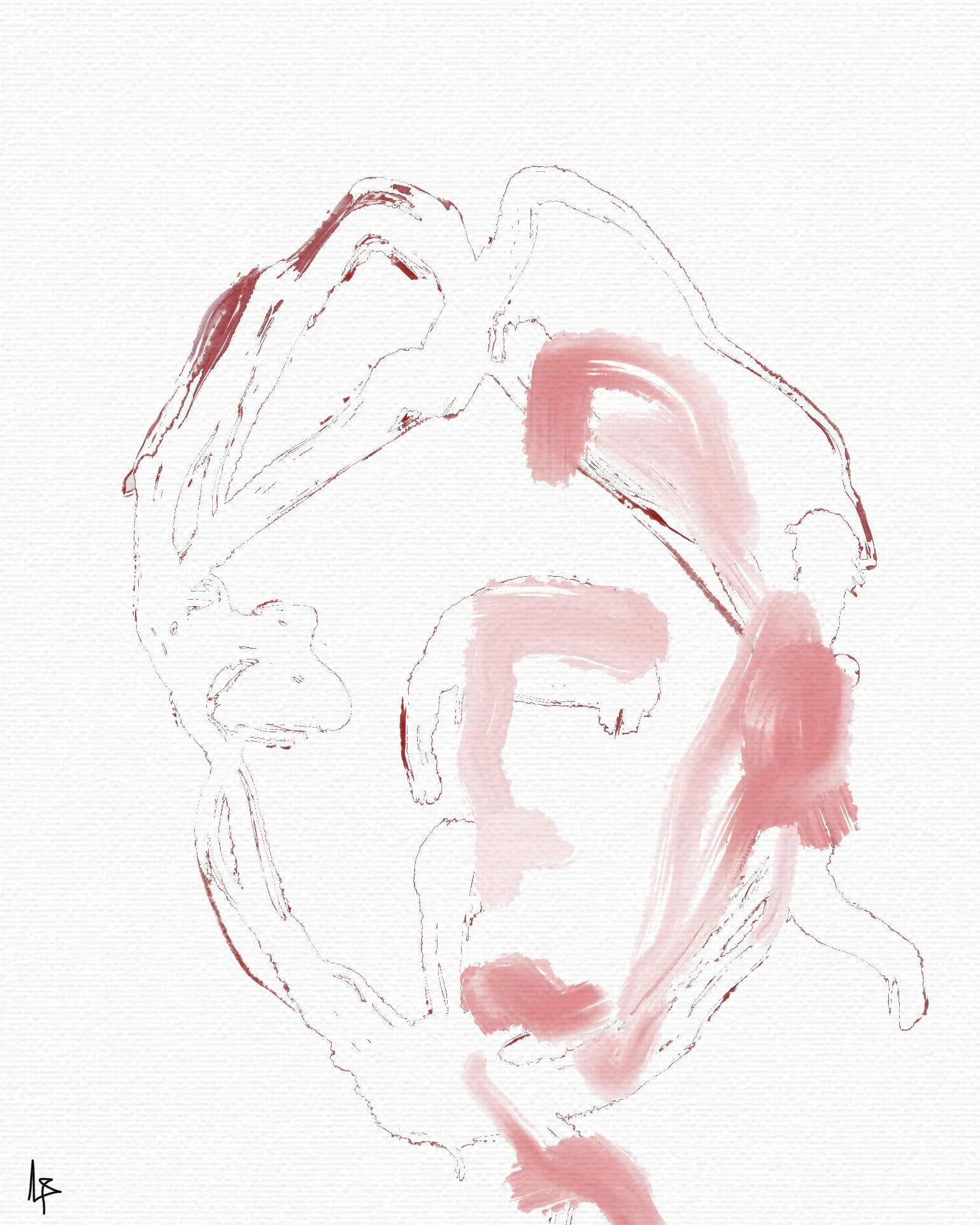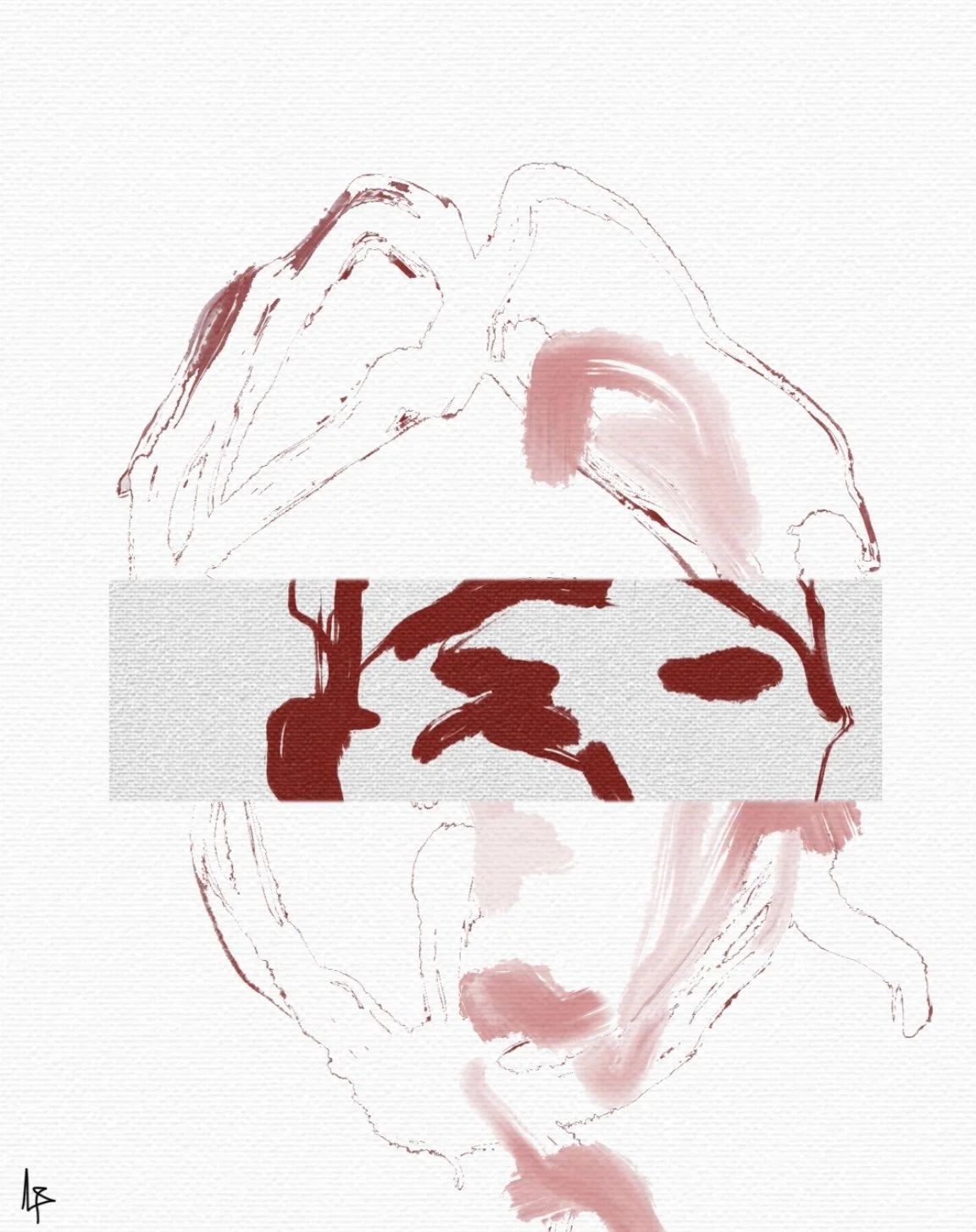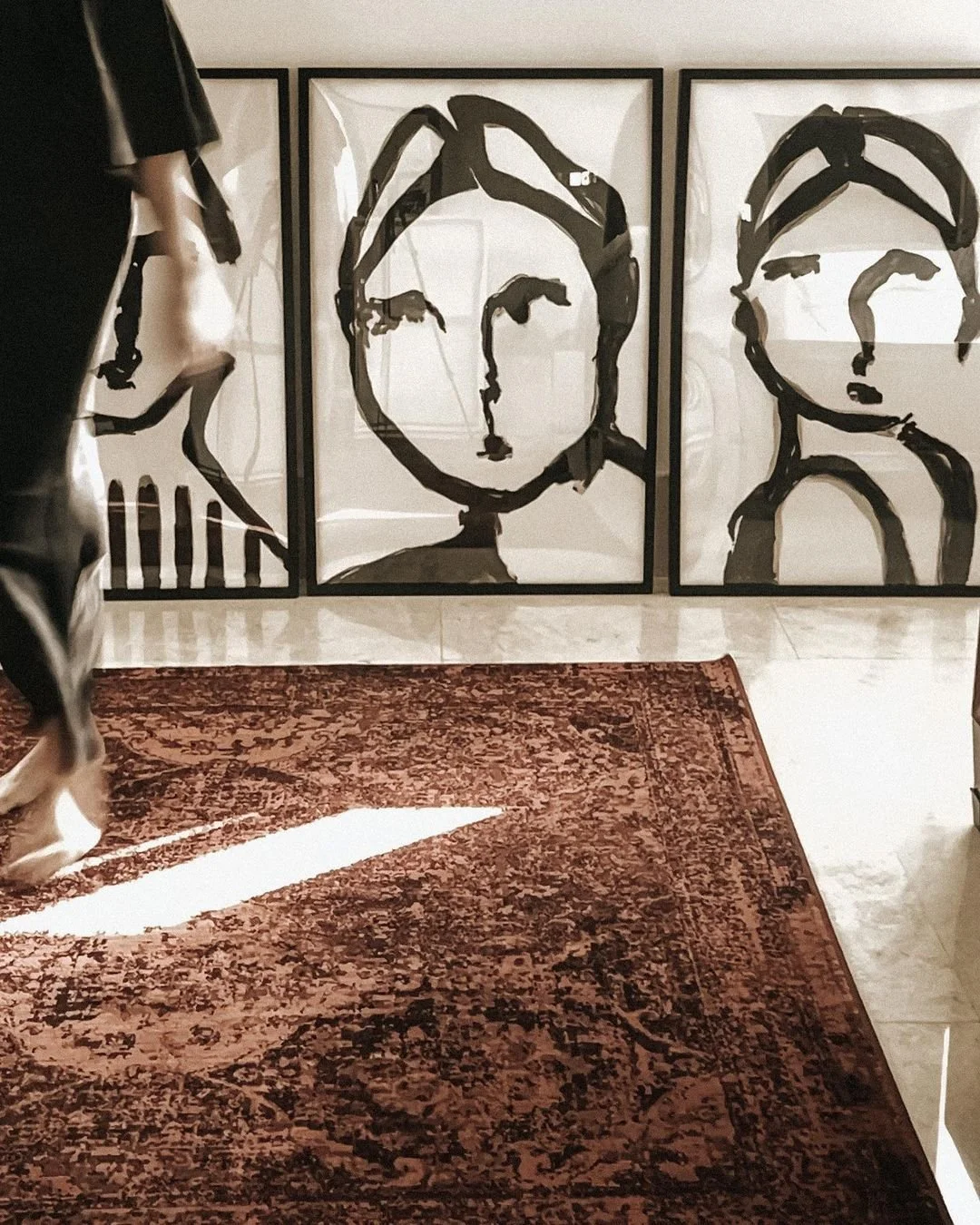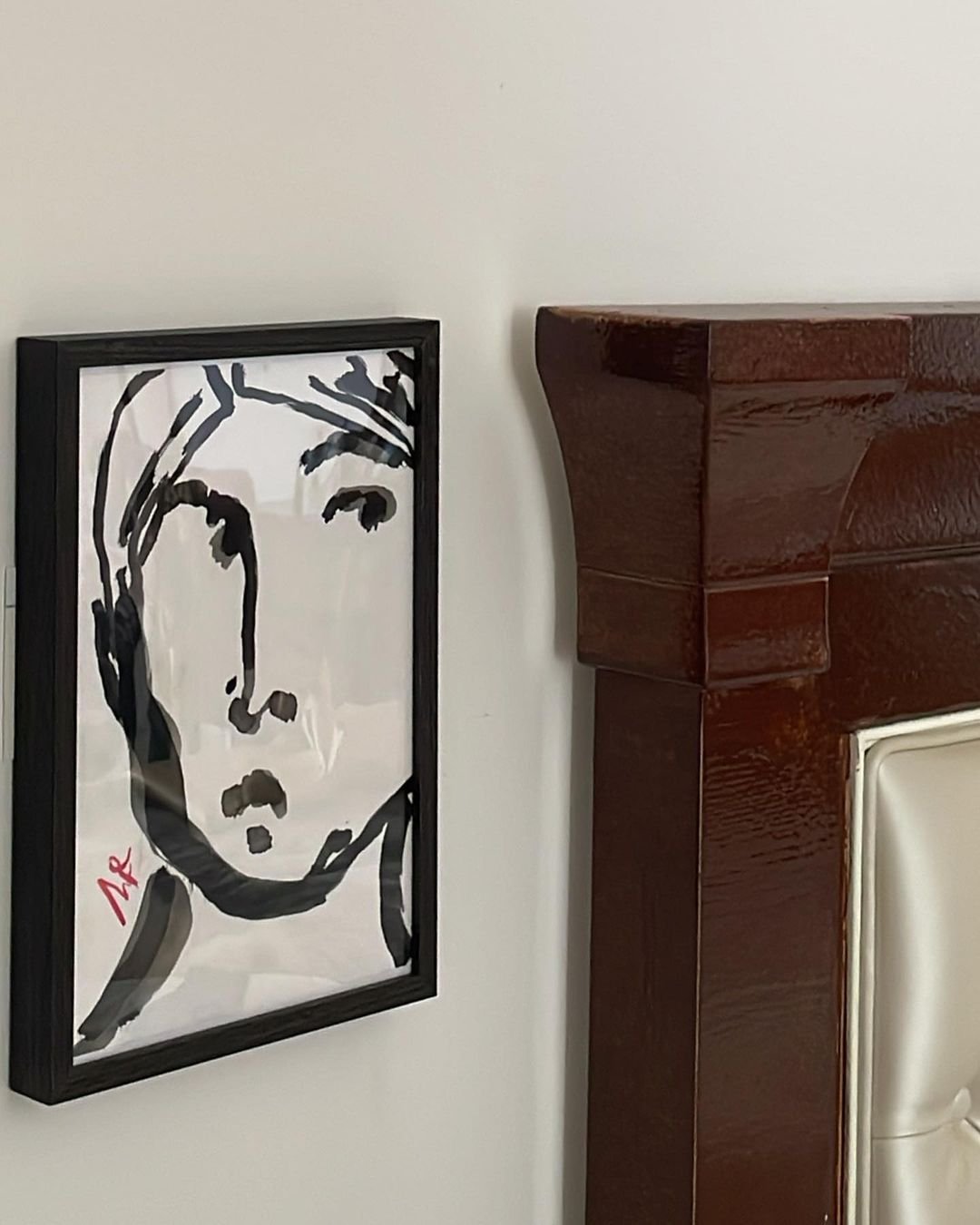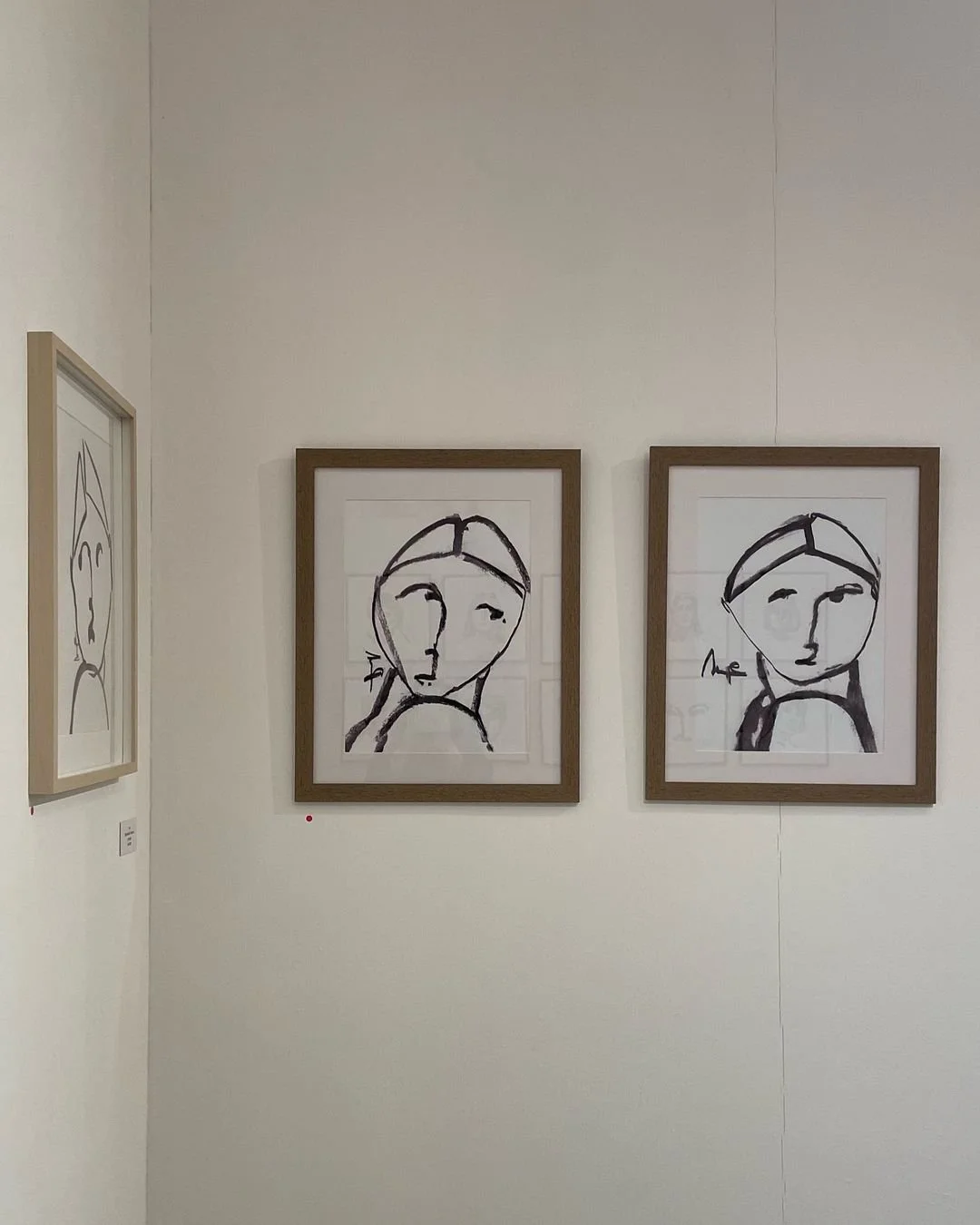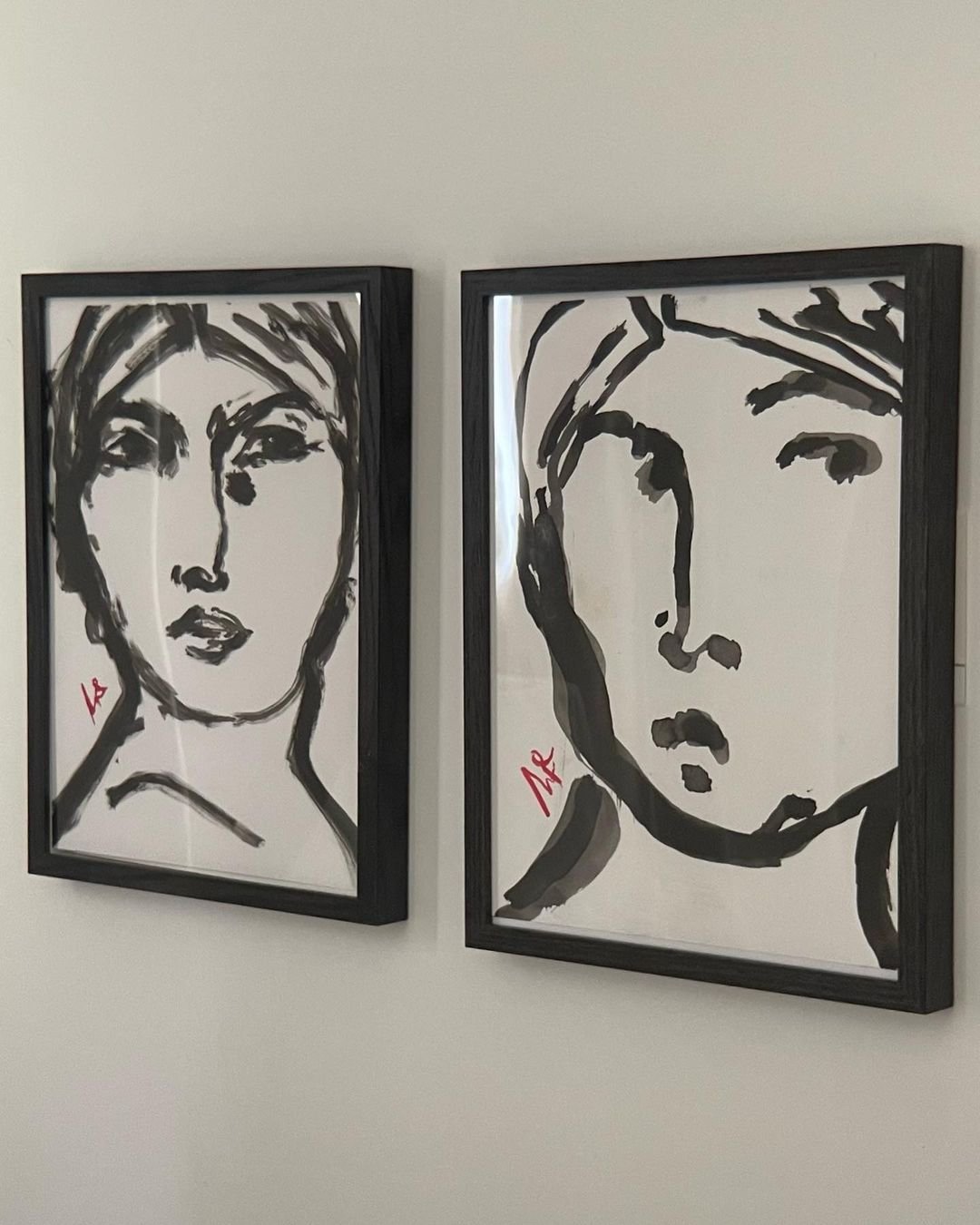Artist in conversation: Maryam Al alawi
“The direction of one's gaze or a slight smirk or frown can reveal so much about what a person is feeling, often without them realizing it”
Maryam Al Alawi is a multimedia minimalist portrait artist based in Oman. Her work captures the essence of human emotion, focusing more on the soul's feelings than detailed facial features. Born and raised in Oman, Maryam is a passionate expressionist artist who appreciates the emotional depth and intensity that art can convey.
Her portraits explore the intricate aspects of human emotions and the power of expression. She believes in the silent language of facial expressions and body language. A mere shift in gaze or a subtle smirk or frown can reveal volumes about what a person feels, often unbeknownst to them. This understanding of slight, instinctive expressions forms the backbone of her artwork.
In her unique style, some of her subjects are painted facing away, symbolising a desire to move on. This approach is reminiscent of traditional paintings where body movement narrates the story. Maryam sees these non-verbal cues as making up 90% of our human journey. Her art is a testament to this belief, as it captures the myriad feelings we experience as humans, making her work not just visually compelling but emotionally resonant as well.
What initially inspired you to become an artist, and how did you develop your unique style?
My culture has a significant influence on my artistic journey. I’ve been surrounded by art and artists my whole life. My grandfather was a florist, and some of my family members worked with jewellery and accessories. My great uncle used to design and make the famous handmade Moroccan rugs. It definitely runs in the family. I wanted to become an artist as soon as I graduated from high school.
It was very important to me to develop my own unique style as an artist, and I achieved this by experimenting and immersing myself in every artistic opportunity I encountered. This helped me discover my strengths and weaknesses as an artist. I’ve tried every single medium out there to express my feelings because they are a significant part of my life. Being a sensitive person, as described by my family, I finally settled on expressing myself through abstract portraits that represent different types of feelings we experience daily. I’m most comfortable using ink in my paintings.
In terms of subject matter, what themes or motifs do you frequently explore in your work, and what draws you to these topics?
As I mentioned earlier, I am fascinated by emotions and how they can be expressed on people's faces. The direction of one's gaze or a slight smirk or frown can reveal so much about what a person is feeling, often without them realizing it.
Understanding these subtle expressions is instinctive to us. We can tell if someone likes or dislikes us based on their facial expressions and body language. Some of my paintings feature subjects facing away as an indication of wanting to move on. Similar to traditional paintings where body movement helps us understand the scene, these expressions make up a significant part of our human journey.
How do you navigate the balance between self-destruction and re-creation as a way towards conscious Happiness?
It’s important to recognize what behaviours lead to self-destruction and re-creation. For me, consistency is key, and I focus on creating every day, even when I don’t feel like it. If I stop and start indulging in my bad habits, I know this leads to my self-destruction. However, because I am aware of it, I keep myself busy and away from it. This way, I find myself creating for better health. When I am healthy, focused, and proud of my work, I am happy.
Can you discuss a specific piece or project that challenged you as an artist, and how you overcame those challenges?
As an artist in the Middle East, I expected many cultural challenges. However, I was surprised by the love and acceptance of my art when I shared them with society.
The only challenge is that many art materials I work with are not readily available here. I either need to order them or travel somewhere to get them. Also, I'd love to acquire old art books from famous artists like Matisse, Van Gogh, and Monet. I find that their paintings have started to influence and inspire me even more.
How do you stay connected with other artists and keep up with new developments and trends in the art world?
The current art scene in Oman is very encouraging and exciting for artists. I am making many new artist friends as there are several social activities and events happening.
We've created a vibrant artist community that is always evolving and keeping pace with trends, or even creating our own trends.
How do you incorporate feedback from critics and audiences into your artistic practice, and how do you balance this feedback with your own artistic intuition?
I genuinely appreciate the feedback I receive from critics and audiences. Their reactions to my work provide a different perspective, which is always enlightening. However, I only incorporate feedback that aligns with my artistic vision. While I'm open to advice about techniques or materials, I never let it interfere with my artistic intuition. My work is primarily an expression of myself, and I believe it’s important to remain true to that.
How do you stay motivated and inspired despite any setbacks or creative blocks you may encounter?
Creative blocks can be challenging but I view them as signals indicating that it's time to try something new. When I experience a creative block, I explore new themes, techniques, or mediums. Even if the outcome isn't perfect, it often exceeds my expectations and broadens my skills. This exploration rekindles my motivation and helps me overcome the setback.
How do you feel about exhibiting your artworks with The Holy Art Gallery?
Exhibiting my artworks with The Holy Art Gallery is an incredible opportunity. I have a deep affection for London, which I consider my second home. Having my work displayed in such a prestigious gallery, not just in London but also in significant art cities like Athens and New York, is a tremendous honor.
Looking ahead, what are your long-term goals and aspirations as an artist, and how do you plan to achieve them?
My long-term goal as an artist is to inspire others, especially those in Oman, to explore modern arts and find their unique voices within it. I want my work to encourage people to become free souls. To achieve this, I need to lead by example. Therefore, I strive to continuously evolve and express my free spirit through my artwork, hoping it will inspire others to do the same.


